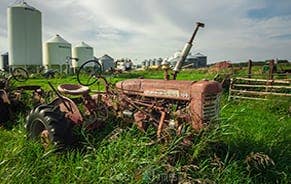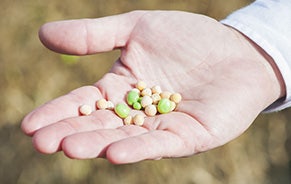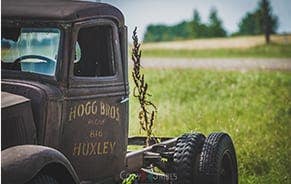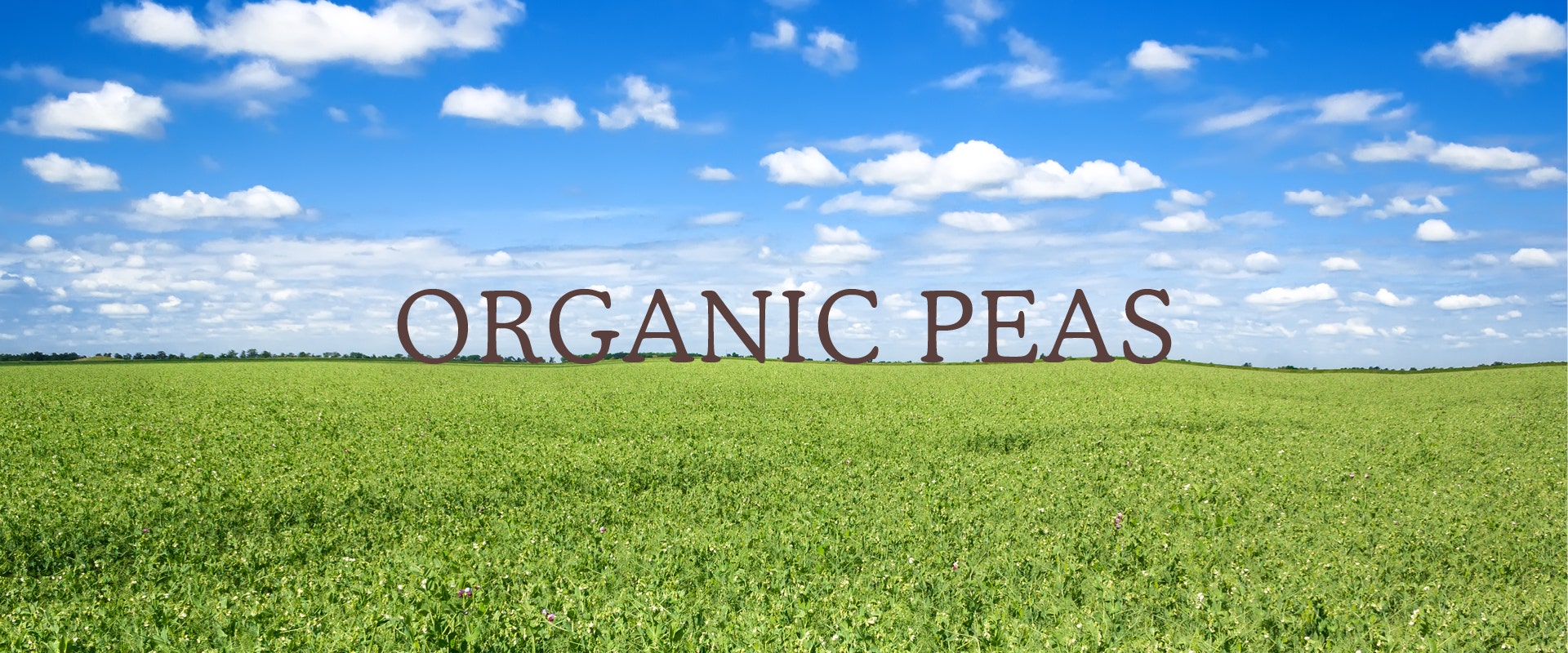

Organic Peas
By Jeffrey Brent Brams, Esq. GC & VP Product Development, Science and International
In the early 1600s, King James VI of Scotland sent ships of settlers to establish a new Scotland off the shores of Canada. Nova Scotia (“New Scotland”) was founded. Over the next hundred years, the British Empire continued to encourage settlers to move to the new Northern frontier with the enticing promise of land, and with it, the potential for wealth. The further the settlers pushed west, the more opportunity existed to stake a claim to undeveloped land and “homestead.”
As the settlers moved into Alberta, they found a very fertile land, reminiscent of the cold interior of Scotland. Typically, there are three months without snowfall in the region between Calgary and Edmonton. However, during the brief respite of June, July and August, the rich soil and pure snowmelt provide the perfect conditions for farming.
This fertile region produces much of Canada’s barley grass, canola and pea crops. On a warm August afternoon, I flew into Calgary, and drove a few hours north to visit our pea farmers. With the city far behind me, the landscape turned to miles of waving grains, yellow flowering fields and a wild expanse of sun-browned, low-growing crops ready for harvest. Wind farms dotted the landscape, together with the occasional piece of farm equipment. I was lost in the peaceful surrounding.
In fact, I was lost—truly. The farm was somewhere off of a “Range Road,” with a turn at the spot where I would see four white “salt pots” and a “truck.” I pondered, “What’s a salt pot?” I stopped into a very large farm with rows of dormitories at the front of the road to ask for directions and was greeted, warmly, in German. It happens, by chance, that German was my minor in college, so I could carry on a basic conversation, but what a surprise in western Canada.
In this region of Canada there are three types of farms. There are family farms whose roots go back to the Scottish homesteading days. There are corporate farming conglomerates that focus on conventional canola, barley and flax, and there are Hutterite colonies that have become a major force in Canadian agriculture. The Hutterian Brethren remind me of the Pennsylvania Amish, but with more technology. There’s a warm, wholesome, environment full of hard-working communal farmers in front of me. They gladly direct me a few miles up the road where I missed my turn.
As I arrive at the farm, I find my photographer waiting for me with a happy, if somewhat mangy, Border Collie. A pair quickly drives up on an ATV to greet me. It’s the farmer’s wife and oldest son. They’ve been out in the fields chasing a new horse that ran away. The mother jumps out to take me on a tour, but the son heads back out to reign in the colt. That’s when I learn about peas. These legumes grow very well for a couple of seasons and deposit rich nitrogen into the soil. While they are susceptible to certain fungi and insects, they are generally hardy and produce high yields. The greatest challenge to the fields is weed control. In fact, the pea fields are under constant threat of being pushed out by the naturally dominant barley grains, rapeseed plants—including the rapeseed plants’ genetically modified counterparts—as well as unhealthy innovations such as Roundup® ready crops and chemicals which are heavily relied upon by conventional farmers to control weeds. It’s a fight for survival, to be sure.
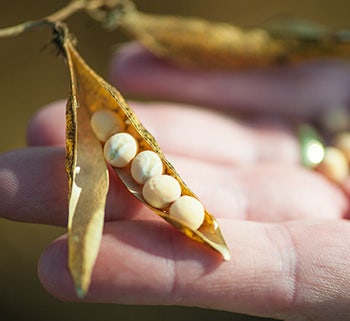

“ORGANIC PEAS, ON THE OTHER HAND, ARE ENTIRELY SUN DRIED WITHOUT THE AID OF FUNGICIDES AND PESTICIDES.”
However, perhaps the most interesting thing I learn is how peas are harvested.
Both conventional and organic peas that are used for pea protein are grown to full maturity when the pods turn green. Then, they are left in the field to sun dry to a crisp brown. Conventional peas are sprayed with chemical fungicides at this point to accelerate their drying process. After all, the window of time before snow threatens to spoil the dry crop can close quickly.
Organic peas, on the other hand, are entirely sun dried without the aid of fungicides and pesticides.Once the peas are field dried, large harvesters collect them, and then they are mechanically sifted in a seed-cleaning machine where the weeds and chaff are separated.
Most of the family farms in this region, whether organic or conventional, are fourth or fifth generation. These are good, hard-working people who work long hours, and live in difficult, isolated conditions—all for the love of the land. Here, as in the United States, the family farm is a dying way of life. I’ve heard that these family farms all use organic practices when raising their peas, but the costs of certification are too high. It’s not true.
The cost of converting land to organic certified farm land is high. The farmer has to endure a three-year conversion in which they give up the use of chemical weed killers such as Roundup®, and they eliminate genetically modified seed crops from their field rotation. Yields during these conversion seasons are low, and the difficulty of purifying the land is a high barrier to organic farming.
But for the farmers that either preserved organic land or endured the difficulty of conversion, the farms are prolific. The environment in this region wants to produce—it’s naturally fertile. When indigenous species are planted and organic fertilizers are applied, the land responds well and the farmers have a more valuable, abundant harvest to sell. As I head back to my office, I think once again how special our farmers are. I am honored to know them—blessed when I visit them—and proud to bring their produce to our customers.
